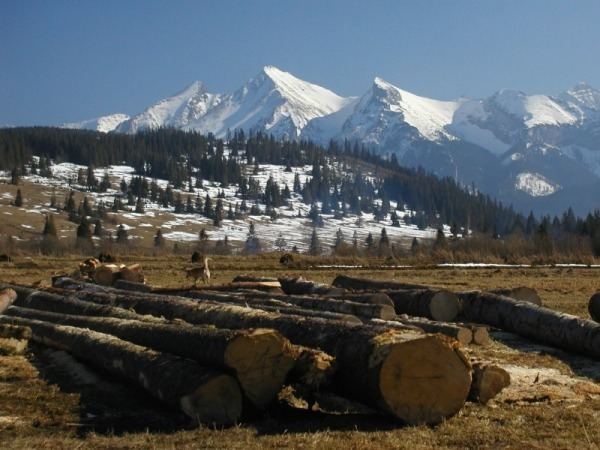Time zone CET (UTC+1) Area code(s) +48 18 Area 7.68 km² Local time Wednesday 11:22 PM | Postal code 34-532 Elevation 760 m Population 903 (2005) | |
 | ||
Weather -1°C, Wind SE at 16 km/h, 77% Humidity | ||
Jurgów [ˈjurɡuf] (Hungarian: Szepesgyörke, Slovak: Jurgov, German: Jurkau or Joerg) is a small village (c. 900 inhabitants) in the Spisz region of southern Poland, near the border with Slovakia and the town of Bukowina Tatrzańska, on the Białka river. It lies approximately 2 kilometres (1 mi) east of Bukowina Tatrzańska, 15 km (9 mi) north-east of Zakopane, and 81 km (50 mi) south of the regional capital Kraków.
Contents
Map of Jurg%C3%B3w, Poland
History
It was founded in 1546 on Vlach law in the possessions of the Niedzica Castle (also known as the Dunajec Castle). At that time it belonged to the Kingdom of Hungary, although the owner of the area was than a Polish magnat Olbracht Łaski. According to legend the settler of the village was a highlander robber called Jurko, hence the name of the village. The documents from the period 1589-1595 related to the sale of the Niedzica possessions by Olbracht Łaski to György Horváth, the village is mentiond in the Hungarian as Gyurgow. After the I World War in when the Austria-Hungary ceased to exist, the village became part of newly independent Poland. In 1939 when the Nazi Germany and Slovakia invaded Poland it was occupied by Slovakia. After the war it returned in 1945 to Poland.
It is one of the 14 villages in the Polish part of the historical region of Spiš (Polish: Spisz).
